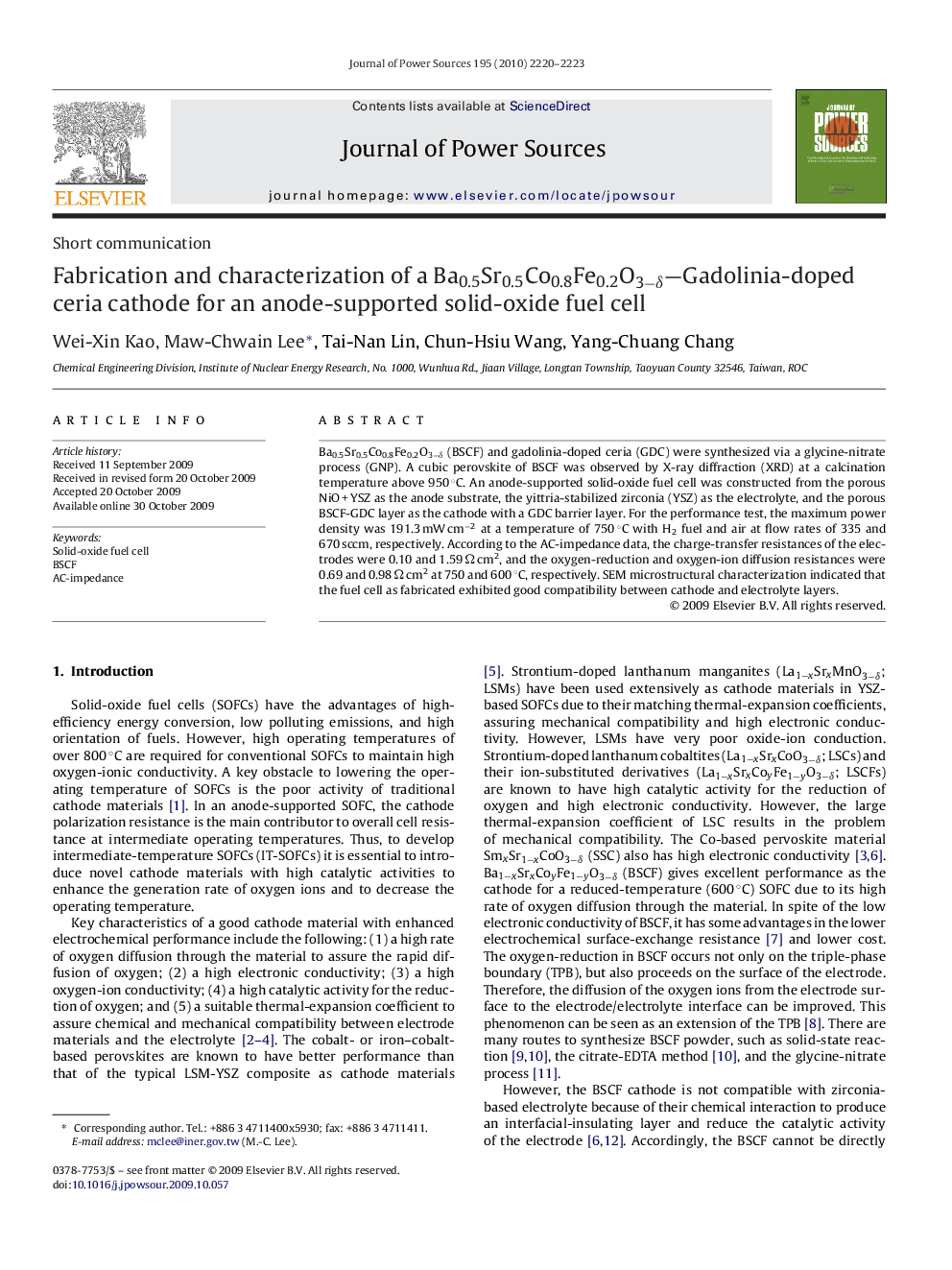| Article ID | Journal | Published Year | Pages | File Type |
|---|---|---|---|---|
| 1289077 | Journal of Power Sources | 2010 | 4 Pages |
Ba0.5Sr0.5Co0.8Fe0.2O3−δ (BSCF) and gadolinia-doped ceria (GDC) were synthesized via a glycine-nitrate process (GNP). A cubic perovskite of BSCF was observed by X-ray diffraction (XRD) at a calcination temperature above 950 °C. An anode-supported solid-oxide fuel cell was constructed from the porous NiO + YSZ as the anode substrate, the yittria-stabilized zirconia (YSZ) as the electrolyte, and the porous BSCF-GDC layer as the cathode with a GDC barrier layer. For the performance test, the maximum power density was 191.3 mW cm−2 at a temperature of 750 °C with H2 fuel and air at flow rates of 335 and 670 sccm, respectively. According to the AC-impedance data, the charge-transfer resistances of the electrodes were 0.10 and 1.59 Ω cm2, and the oxygen-reduction and oxygen-ion diffusion resistances were 0.69 and 0.98 Ω cm2 at 750 and 600 °C, respectively. SEM microstructural characterization indicated that the fuel cell as fabricated exhibited good compatibility between cathode and electrolyte layers.
